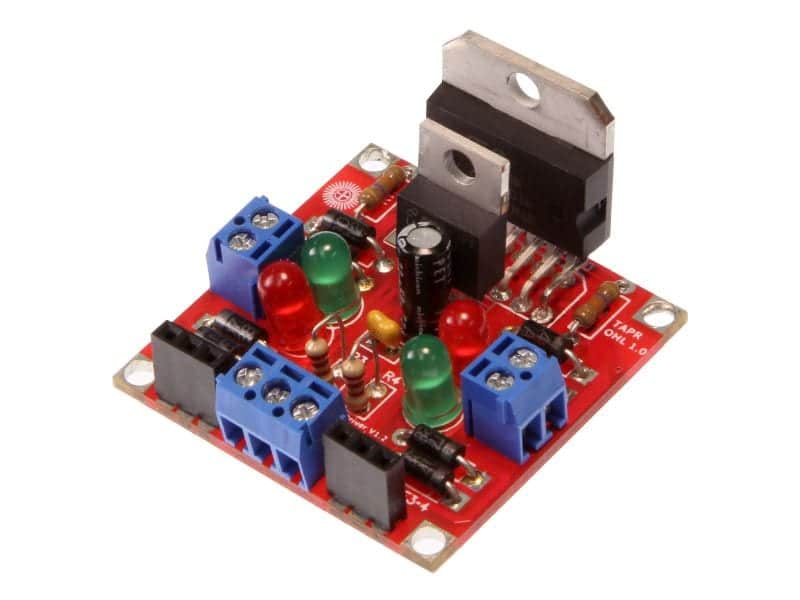

L298N Motor Driver Module pinout and Components: NOTE: L298N has two such h-bridge circuits meaning you can control up to two DC motor using it.įeatures of the L298N Motor Driver Module: The table below sums up activity, with S1-S4 corresponding to the diagram above: S1 Which causes the motor to stop instantly as the motor’s terminals are shorted, or to let the motor ‘free rush’ to a stop (coasts), as the motor is viably separated from the circuit. However, it can also be utilized to ‘brake’ the motor. The H-bridge configuration is commonly used to switch the direction of the motor. This causes anticlockwise rotation of the motor. When S2 and S3 are ON and S1 and S4 are OFF, the right side of the motor terminal is more +ve than the left terminal. This causes clockwise rotation of the motor. When S1 and S4 are ON and S2 and S3 are OFF, the left side of the motor terminal is more +ve than the other terminal. Change in the direction of rotation of motor using h-bridge The direction of rotation of the motor depends upon the switch positions. An H-bridge schematic looks like this: H-bridge circuit Diagram

relays, solenoids, motors (DC and stepping motor), etc. It can also be used to control inductive loads e.g.

#L298n motor driver making sound full
It is a high current dual full H-bridge driver that is constructed to receive standard TTL logic levels. The L298N motor driver is based on the H-bridge configuration (an H-bridge is a simple circuit that lets us control a DC motor to go backward or forward.), which is useful in controlling the direction of rotation of a DC motor. L298N Motor Driver Module details: L298N motor driver Module And to supply the voltage/current required to operate the motor, an external supply is connected to the motor driver module. We bridge the gap between the Arduino and motor by introducing a motor driver between them. To solve this problem the use of a motor driver is essential. Hence the output of Arduino is not enough to power up the motors. Also, the output current limit of Arduino is relatively very low. But a decent DC motor needs at least 5V or 12V. For instance, the Arduino or PIC microcontroller can output a maximum voltage of 5V or 3.3V. Why do we need a motor driver module?Īll microcontrollers operate on low-level voltage/current signals, unlike motors. The IC alone can control the DC motor but using the module makes the interfacing with Arduino easy. The motor driver module consists of a motor driver IC, which is the heart of the module. To put it in simple words, you can control the direction of DC motors by giving appropriate logic to the motor driver module. This input logic controls the direction of DC motors connected to the driver. A motor driver module takes the low voltage input from a controller like Arduino. It is commonly used in autonomous robots and RC cars (L2938N and L293D are the most regularly utilized motor driver chips). What is a Motor Driver Module? Motor DriversĪ motor driver module is a simple circuit used for controlling a DC motor. But first, we must answer some basic questions like what is a motor driver, why is it used in a circuit, and what is an H-bridge configuration, etc. In this article, you will learn about the L298N motor driver module in detail.


 0 kommentar(er)
0 kommentar(er)
